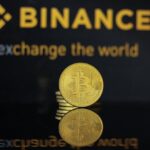Germany’s renewable energy landscape is booming, but it faces a unique challenge: excess power generated from wind and solar farms often goes unused, especially during peak production periods. To tackle this, German telecom giant Deutsche Telekom and Bankhaus Metzler, Germany’s oldest private bank, have teamed up to create a sustainable solution through Bitcoin mining. By harnessing surplus renewable energy that would otherwise be wasted, this partnership is launching a pilot project to stabilize the grid and produce Bitcoin simultaneously. The aim? Use Bitcoin mining as a “digital monetary photosynthesis,” converting unused energy into digital assets while helping maintain grid stability.
This pioneering project is set to unfold at Riva GmbH Engineering’s facilities in Backnang, Germany. Riva Engineering, known for its sustainable energy initiatives, already produces its own power through a photovoltaic system. In this partnership, Deutsche Telekom’s subsidiary, Telekom MMS, will manage the Bitcoin mining devices, while Bankhaus Metzler will oversee testing and data analysis. Let’s dive into how this project aims to advance Germany’s renewable energy initiatives through innovative blockchain applications.


Germany’s ‘digital monetary photosynthesis’ project shows how Bitcoin mining can be more than just energy consumption—it can be a sustainable solution for stabilizing the renewable energy grid.
Bitcoin Mining to Balance the Renewable Energy Grid
Germany has invested heavily in renewable energy sources, yet the country faces hurdles with balancing energy supply and demand. Wind and solar power can fluctuate based on weather conditions, leading to moments when too much electricity is generated. Since storing this excess energy is costly and inefficient, a portion of it often goes to waste. This is where Bitcoin mining comes into play, offering a unique solution to absorb this surplus energy by turning it into a valuable, digital asset.
The concept is simple but transformative. Bitcoin mining, known for its energy demands, can act as a “flexible load” that adapts to available electricity. When the grid is at capacity, mining operations ramp up to consume the excess power. This process, dubbed “digital monetary photosynthesis” by Oliver Nyderle, Head of Digital Trust & Web3 Infrastructure at Deutsche Telekom MMS, allows renewable energy producers to convert their surplus energy into Bitcoin. This solution has proven successful in countries like the U.S. and Finland, and now, Germany is testing its potential.
Sustainable Infrastructure with Blockchain Technology
The German pilot project not only aligns with environmental sustainability but also pushes forward blockchain technology applications in traditional finance. Telekom MMS has been active in the decentralized Web3 infrastructure, supporting networks like Chainlink, Fetch.ai, and Polygon. This venture into Bitcoin mining marks Deutsche Telekom’s first foray into the energy-intensive world of proof-of-work (PoW) networks, such as Bitcoin.
For Bankhaus Metzler, this project is more than just a financial investment; it’s a step toward integrating blockchain technology with mainstream financial services. Hendrik König, Head of the Digital Assets Office at Bankhaus Metzler, highlights the significance of this endeavor: “Our goal is to advance blockchain innovation in Germany.” By testing Bitcoin mining within a renewable energy context, Bankhaus Metzler hopes to explore broader applications for digital assets within the financial ecosystem.
The field data gathered from this pilot will be invaluable, offering insights into whether Bitcoin mining can genuinely contribute to grid stability. Success here could pave the way for future collaborations, with more financial institutions exploring blockchain-powered solutions to modern challenges.
A Model for Renewable Energy and Digital Asset Convergence
The implications of this experiment stretch beyond Germany’s borders. As nations worldwide grapple with integrating renewable energy into existing grids, many are looking for adaptable solutions. Bitcoin mining, traditionally viewed as an energy-consuming process, is reimagined here as a beneficial energy sink. If the pilot proves successful, it could serve as a model for other countries seeking to maximize renewable energy usage while participating in the burgeoning digital asset economy.
Wind and solar power producers stand to benefit significantly from this project. By pairing renewable energy production with Bitcoin mining, they gain a new revenue stream and reduce the issue of unpredictable regulating power. This could help power producers navigate regulatory challenges more effectively, promoting a cleaner and more economically viable energy landscape.
Final Thoughts: Germany’s Step into Green Bitcoin Mining
Deutsche Telekom and Bankhaus Metzler’s pilot project is a groundbreaking approach that could redefine how we think about Bitcoin mining and renewable energy. By converting surplus renewable power into Bitcoin, this project could address grid stability challenges while supporting the digital economy. Germany’s green Bitcoin mining experiment stands at the intersection of financial innovation and sustainable energy, showing how blockchain technology can integrate with critical infrastructure to create a more balanced and efficient energy system.
As nations strive to meet ambitious climate goals, the convergence of digital assets and renewable energy offers exciting possibilities. Germany’s pilot program could be a significant step forward, proving that Bitcoin mining, often criticized for its environmental impact, can contribute to a sustainable future.




